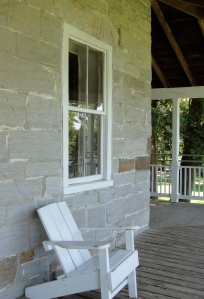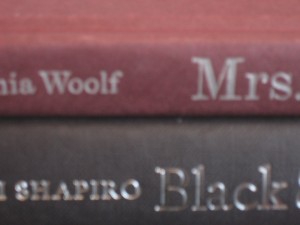
If you can believe it, we’re down to the last ten posts in this practice. And for these last days, I’m going to look back a bit at the past year–a year in which I joined my selves together–past, present, and future. Mary … Continue reading


If you can believe it, we’re down to the last ten posts in this practice. And for these last days, I’m going to look back a bit at the past year–a year in which I joined my selves together–past, present, and future. Mary … Continue reading

So I’m down to the last hundred posts in this year of catching me–this year of looking at the photos, digging up memories, finding the words to fill in the spaces. I’m taking up more room these days. And I’m … Continue reading

When my youngest child entered high school and I could see that in four short years I would no longer be tethered to this house and to the school year, for the first time since my early twenties, I began … Continue reading
 I walk every step of what used to be the camp, of what is now Kingsland Bay State Park. Then I sit in a white Adirondack chair with my pen and paper, looking across the bord de l’eau to the Adirondacks. I bring my vision in to the flag pole cemented to the ground. The cement tells me it’s the same one that was here when I arrived for the first time in July of 1970.
I walk every step of what used to be the camp, of what is now Kingsland Bay State Park. Then I sit in a white Adirondack chair with my pen and paper, looking across the bord de l’eau to the Adirondacks. I bring my vision in to the flag pole cemented to the ground. The cement tells me it’s the same one that was here when I arrived for the first time in July of 1970.
Why do I want to come back? For proof I was here. For clues as to who I used to be. I just want to stay long enough to…
I think this place has something to tell me.
 I remember friends I made here, but I no longer keep up with them. It’s this place I miss, not the people who were here. Is it this place or the person I was here?
I remember friends I made here, but I no longer keep up with them. It’s this place I miss, not the people who were here. Is it this place or the person I was here?
I was my best self here. I learned how to be myself here. It was my first time away from home for a long period of time–eight weeks that first summer, nine the others. Each summer I got closer to me.
 The metal rings holding the flag clang against the pole. The water of Lake Champlain laps against the shore. People spread cloths on the picnic tables. A motor boat zooms past a large sail boat that seems to linger in the moment.
The metal rings holding the flag clang against the pole. The water of Lake Champlain laps against the shore. People spread cloths on the picnic tables. A motor boat zooms past a large sail boat that seems to linger in the moment.
Writing about it again this morning for this post, I finally get it. It’s the continuous life. That’s why I’m here–to understand that the girl who was here in 1970 is the same woman who is here now. I’ve been tagging these posts all week with those words without seeing it.
As Mary Gordon wrote so well in The Rest of Life:
Final post in 4-part series on Ecole Champlain: Part 1: places that call us back Part 2: hoping to discover Part 3: proof Part 4: writing my way there“She sees that she has before her an important task: to understand that all the things that happened in her life happened to her. That she is the same person who was born
, was a child, a girl, a young woman, a woman, and now she is old. That there is some line running through her body like a wick. She is the same person who was once born. All the things that happened to her happened to one person…’I’m trying to understand what it means to have had a life.’”
 My favorite passage in Virginia Woolf’s Mrs. Dalloway:
My favorite passage in Virginia Woolf’s Mrs. Dalloway:
“Do you remember the lake? she said, in an abrupt voice, under pressure of an emotion which caught her heart, made the muscles of her throat stiff, and contracted her lips in a spasm as she said “lake.” For she was a child, throwing bread to the ducks between her parents and at the same time a grown woman coming to her parents who stood by the lake, holding her life in her arms which, as she neared them, grew larger and larger in her arms, until it became a whole life, a complete life, which she put down by them and said, “This is what I have made of it! This!” And what had she made of it? What, indeed? sitting there sewing this morning with Peter.”
This grappling with the fact that we are now the same person we were when we were a child reminds me of the passage that so struck me in Mary Gordon‘s The Rest of Life. With one important difference. Here, the narrator, Mrs. Dalloway, appears to be judging her life and finding it coming up short. This was in 1925.
Almost a hundred years later, so does Clara in Dani Shapiro‘s 2007 Black & White:
“…invariably Clara walked away from them feeling that there was a secret club of motherhood, complete with a password no one had ever given her. Why did this all seem so satisfying to them–the cupcake baking, the constant scheduling, the endless games of Candy Land? And what was wrong with Clara, what psychic disease caused her constant yearning for something more?”

I used to copy down favorite passages in a notebook. A small five by seven three-ring binder. I could move the pages around, organize them. I haven’t written in it in a while. I’m not sure why. Maybe too busy writing myself. Anyway, I … Continue reading
You must be logged in to post a comment.